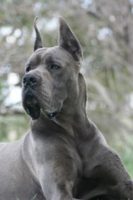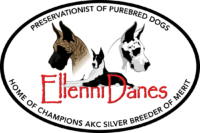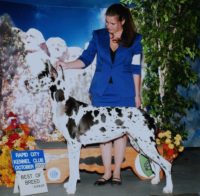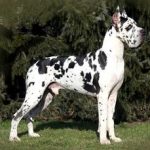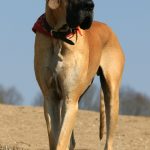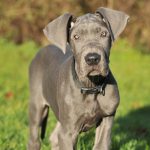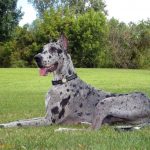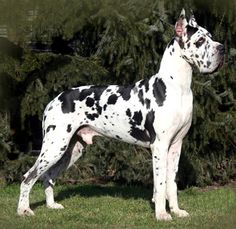 There are six main colors of coat in pure breed Great Danes. These include fawn, brindle, black, mantle, blue and harlequin. Blue Great Danes are popular for their bizarre steel blue appearance, but harlequin dogs are equally, if not more, desirable. The harlequin Great Dane coloring has a pure white base with black patches all over that are torn, random and irregular.
There are six main colors of coat in pure breed Great Danes. These include fawn, brindle, black, mantle, blue and harlequin. Blue Great Danes are popular for their bizarre steel blue appearance, but harlequin dogs are equally, if not more, desirable. The harlequin Great Dane coloring has a pure white base with black patches all over that are torn, random and irregular.
In breeding and showing circles, Great Danes with a pure white neck and black patches over the rest of the body is preferred. The black spots should never be so big that they appear as if they could be a blanket laying over the dog. They must be small, irregular and separate from one another.
Small grey spots, that would usually be seen on merle dogs, are less desirable but still considered normal.
Showing a Harlequin Great Dane
The harlequin Great Dane coloring is maintained by breeders as a way of creating a wider gene pool. They are considered to be ‘neither desirable nor to be disqualified’. This is why a harlequin Great Dane dog will never reach the very highest grading at dog shows. This makes them far more popular with pet owners than dog showers and breeders. The black and white coloring makes it possible to create dogs with a wider range of colors. Grey merle dogs can produce the black and white effect depending exactly how the dogs are combined.
The fawn color is relatively common in Great Danes. It appears as a yellowy gold and has a black mask, which appears around the eye and eyebrows. Sometimes the mask expands towards the ears. The brindle color is a combination of fawn and black in stripes. Black Great Danes often have a white spot on their chest, but this is considered a fault in the show world. This means they are more likely to be sold as pets than as show dogs.
Mantle-colored Great Danes are black and white with a large black blanket extending across their back, with white collars, chests or legs. This color is also known as ‘Boston’ to some breeders, as a result of them sharing the same pattern as most Boston Terriers.
